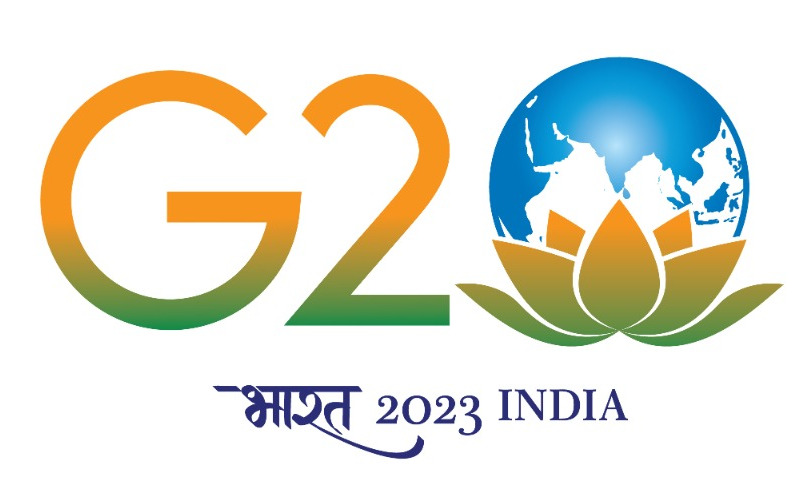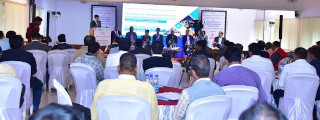Brief Overview of Cement Sector
In a rapidly developing nation such as India, there is no dearth of demand for new infrastructure. Indian Cement industry, the second largest producer of cement after China, produces 7% of the global cement production and completed 100 years of its service to the Nation in October 2014 with the first plant coming up in 1914. It is one of the fastest-growing sectors and is also humungous in its volume of production as compared to volumes worldwide. With a total of 206 large integrated cement plants and about 350 mini cement plants making up a total capacity of 539 million tonnes per annum in 2018-19, the Indian cement sector is a formidable giant. Indian cement consumption is around 235 kg per capita against the global average of 520 kg per capita. There is no foreseeable reason for any slowdown in the juggernaut of the cement industry in India. As per ICRA, in FY22, the cement production in India is expected to increase by ~12%YoY, driven by rural housing demand and government’s strong focus on Infrastructure Development. As per CRISIL Ratings, the Indian Cement Industry is likely to add ~80 million Tons (MY) capacity by FY24, the highest since the last 10 years, driven by increasing spending on housing and Infrastructure activities.
Indian cement plants are comparable with the best in the world in respect of production facilities, technology, and energy efficiency. The sector has achieved the best specific energy consumption levels achieved i.e., 670 kcal/kg of clinker and around 68 kWh per tonne of cement, which are comparable with the best-achieved levels in the world.
Manufacturing Process & Energy Consumption:
Generally, cement manufacturing process involves the following stages:
- Crushing
- Pre-homogenization and raw meal grinding
- Pre-heating
- Pre-calcining
- Clinker production in the rotary kiln
- Cooling and storing
- Blending
- Cement grinding
- Storing in the cement silo
Mostly dry processes is deployed in the raw material preparation and clinkerisation sub-processes.
In the dry process, crushed raw materials are dried in a cylindrical rotary drier, mixed at per predetermined ratio, further ground and conveyed in different storage tanks. The prepared materials are further mixed as per pre-determined ratio and fed into rotary kiln for clinkerisation.
Depending upon the usage of clinker and other materials in the final product, marketed cement product is classified under three different categories such as Ordinary Portland Cement (OPC), Portland Pozzolana Cement (PPC) & Portland Slag Cement (PSC). Clinker constitutes about 95% in OPC, Gypsum contributing for the rest. In PPC, 15 to 20% of the clinker is substituted by pozzolonic material such as fly ash whereas in PSC about 50% clinker is substituted by blast furnace slag, Gypsum contribution in both the cases remaining at the same level of about 5%. With increased availability of fly ash and its favorable contribution in improving the strength of concrete and reduction in cost of energy, share of PPC production has been continuously increasing all over the world, more so in India.
Fig: Process diagram of a typical Dry type Integrated Cement Plant
(Source)
The cement plant consumes two types of primary energy: thermal energy and electricity. The material transport, crushing and milling mainly consumes electricity whereas thermal energy is used for calcination. The secondary energy sources used in cement production are kiln exhaust gas and hot air from clinker cooler. The secondary heat contained in the hot kiln exhaust gas is utilized primarily in pre-drying and preheating the raw materials before their introduction into the kiln and raw mill. The waste heat contained in the exhaust air from the clinker cooler serves to preheat combustion air and also to dry and preheat the raw materials before they enter the raw mill and kiln. Electricity is majorly consumed in the clinker grinding, raw material processing and clinker production. Typical distribution of energy usages in different processes is shown below:
| Sub- Processes | % of Total Electricity Consumption |
|---|---|
| Raw-material Preparation | 30 |
| Clinker Production | 25 |
| Clinker Grinding | 40 |
| Others | 05 |
Electricity and Coal have been the sources of energy for most of the plants. Cost of both the energy resources have been sharply increasing putting pressure on the profitability margin even for the energy efficient units. With a view to remaining globally competitive, Indian Cement Industry has made major strides by undertaking innovative measures for managing the energy cost. These include:
- Investment in energy efficient technologies
- High efficiency captive power generation including based on waste heat recovery.
- Use of non-conventional fuel like biomass, RDF (Municipal solid waste derived fuel), old tyres etc.
- Off-site renewable energy generation and wheeling through open access.
Typical fuel mix of Cement manufacturing process includes a) Coal (97%) b) Oil (1%) c) Grid Electricity (2%).
PAT Scheme for Cement Sector
In the Cement Sector, to become a designated consumer, the notified threshold limit is 30,000 metric tonnes of oil equivalent of energy consumption per annum. PAT Cycles wise number of DCs, their total energy consumption (Million TOE) and energy savings targets (Million TOE) of the Cement Sector are presented below:
| Cycles | No. of DCs | Total Energy Consumption (Million TOE) |
Energy Saving Targets (Million TOE) |
|---|---|---|---|
| PAT Cycle I | 85 | 15.01 | 1.48 |
| PAT Cycle II | 111 | 21.43 | 1.117 |
| PAT Cycle III | 14 | 1.743 | 0.096 |
| PAT Cycle IV | 1 | 0.074 | 0.004 |
| PAT Cycle V | 12 | 1.6 | 0.087 |
| PAT Cycle VI | 37 | 1.242 | 0.063 |
| PAT Cycle VII | 120 | 25.56 | 0.896 |
| PAT Cycle VIII | 25 | 0.628 | 0.0323 |
Energy Savings Achievement in the Cement Sector under PAT Cycle I and PAT Cycle II are 1.48 Million TOE and 1.56 Million TOE respectively.
Best Practices Adopted by Cement Sector
Cement industries have adopted the following key operational best practices and technologies as part of their Industrial Energy Efficiency and Decarbonisation (IEED) measures:
- Increase in AFR utilisation.
- Waste Heat Recovery from the pre-heater outlet.
- Adopting Renewable Energy.
- Calcium looping as Carbon Capture technology.
- Installation of Kiln Shell radiation recovery system in Kiln for CPP makes up water heating.
- Reduction of Clinker Factor in Pozzolana Portland Cement.
Details of Line Ministries
- Department for Promotion of Industry and Internal Trade (DPIIT) under Ministry of Commerce and Industry
- National Council of Cement and Building Materials (NCCBM) under Ministry of Commerce and Industry
Details of Specialised Organization / Research Institute
Details of Industrial Associations
List of Key Technologies
- Increase in usage of AF from 2% to 10%.
- Waste heat recovery from the cooler and preheater outlet.
- Adoption of a Vertical roller mill for grinding.
- Installation of Kiln Shell radiation recovery system in kiln.
- Reduction in Clinker factor in Pozollana Portland Cement.
- Oxy-fuel combustion technology
- Manufacturing of polymer cement from waste of iron sludge
List of EE and Decarbonisation Technologies and Solutions (National & International)



